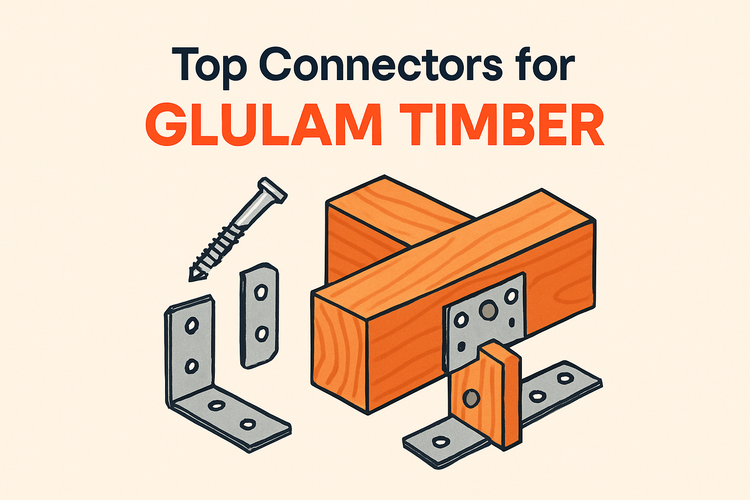Top Connectors For Glulam Timber In Construction

Introduction to Top Connectors for Glulam Timber
Glulam, or glued laminated timber, has become a popular choice in modern construction due to its strength, aesthetic appeal, and sustainability. The performance of glulam structures heavily relies on the types of connectors used to join various elements.
Top connectors specifically designed for glulam timber ensure structural integrity, distribute load efficiently, and meet safety standards in demanding architectural applications.
Common Types of Connectors for Glulam Timber
Top connectors for glulam timber include various metal solutions such as concealed connectors, face-mount hangers, and beam-to-column connections. Each serves a specific structural purpose and can be selected based on the type of load, span, and architectural design.
One of the most frequently used options is the beam hanger, which allows glulam beams to be fixed securely without visible fasteners. These ensure a clean finish while maintaining structural capability. Joist hangers, for instance, are a popular choice due to their versatility in timber-to-timber joints and wood-to-concrete connections. For more information, check out our collection of Joist Hangers.
Another top choice includes angle brackets that provide support in corners or joints requiring right-angled reinforcement. They are especially useful when dealing with dynamic loads or when a flush fit between timber pieces is required. Browse through our Angle Brackets for more solutions curated for glulam timber applications.
Benefits of Using High-Performance Glulam Connectors
Using high-quality connectors for glulam timber offers several advantages. First and foremost, they provide stability and durability to architectural structures, especially those exposed to dynamic loads or environmental variables.
High-performance connectors enhance the lifespan of the timber framework by minimizing stress concentrations and distributing load evenly. This avoids sudden failures and extends the usability of the construction. They're also critical in high-wind areas, where secure fixing is paramount. Our range of Connectors for Glulam Timber are tailored for both residential and commercial spaces seeking long-term reliability.
In some cases, these connectors allow for prefabrication, making the construction process faster and more cost-effective, especially in large-scale timber frame assemblies. Ease of installation coupled with code-compliant performance features makes them the preferred choice among many engineers and builders.
Considerations When Selecting the Right Connector
Choosing the proper connector depends on several factors including load type, joint configuration, moisture exposure, and fire rating requirements. It is essential to match the connector with the performance specification of the timber used, especially in engineered wood components like glulam.
Environmental factors such as humidity or exposure to chemicals may necessitate special coating or stainless steel alternatives to avoid corrosion. Furthermore, architectural features or concealed designs might call for hidden connectors, which blend functionality with aesthetics. For structures requiring additional anchorage, Post Base systems are often used to anchor glulam columns securely to concrete foundations or flooring systems.
Sometimes the selection also involves compliance with local building regulations and safety codes. Installation guidelines from the manufacturer should always be followed in conjunction with engineering advice to ensure safe and effective use.
Installation Best Practices for Reliable Strength
To guarantee the full performance of top connectors, proper installation practices must be followed meticulously. Pre-drilling when necessary helps avoid timber splitting and ensures screws or fasteners are embedded correctly.
Glulam connectors must be installed using correct tools and calibrated torque for fasteners. Builders and contractors should avoid improvisations and instead rely on technical documentation or manufacturer guides. Structural screws and nails compatible with the specific connector should be sourced from trusted suppliers like our selection of Screws and Nails.
Final checks such as confirming alignment, bracing rigid points during fastening, and ensuring that all connections remain flush and plumb contribute to overall structural efficiency. For larger structures, temporary supports may be used during the installation process to ensure precision and safety.
